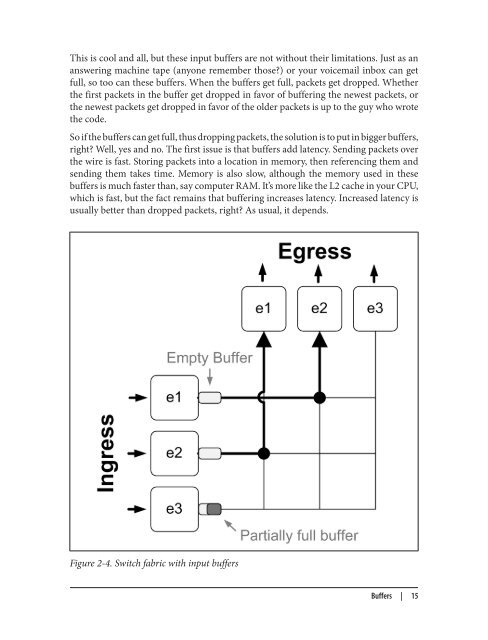You also want an ePaper? Increase the reach of your titles
YUMPU automatically turns print PDFs into web optimized ePapers that Google loves.
This is cool and all, but these input buffers are not without their limitations. Just as an<br />
answering machine tape (anyone remember those?) or your voicemail inbox can get<br />
full, so too can these buffers. When the buffers get full, packets get dropped. Whether<br />
the first packets in the buffer get dropped in favor of buffering the newest packets, or<br />
the newest packets get dropped in favor of the older packets is up to the guy who wrote<br />
the code.<br />
So if the buffers can get full, thus dropping packets, the solution is to put in bigger buffers,<br />
right? Well, yes and no. The first issue is that buffers add latency. Sending packets over<br />
the wire is fast. Storing packets into a location in memory, then referencing them and<br />
sending them takes time. Memory is also slow, although the memory used in these<br />
buffers is much faster than, say <strong>com</strong>puter RAM. It’s more like the L2 cache in your CPU,<br />
which is fast, but the fact remains that buffering increases latency. Increased latency is<br />
usually better than dropped packets, right? As usual, it depends.<br />
Figure 2-4. Switch fabric with input buffers<br />
Buffers | 15

















